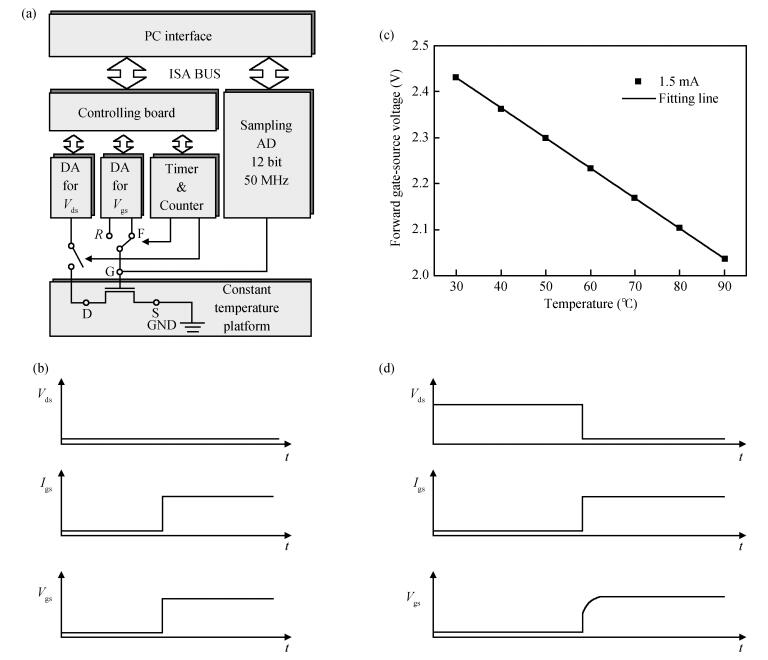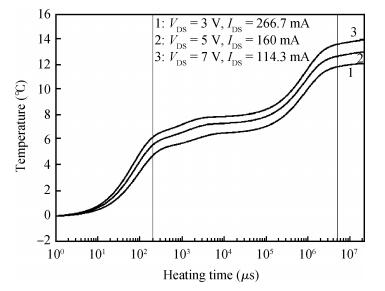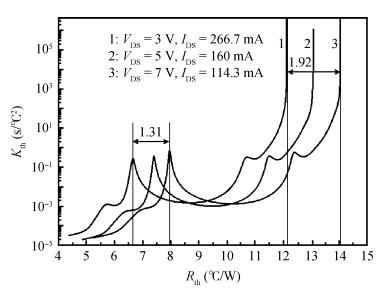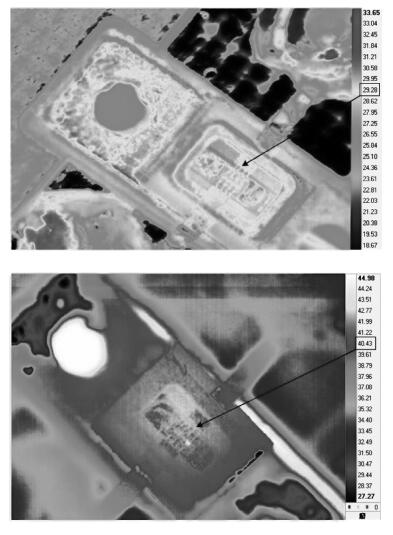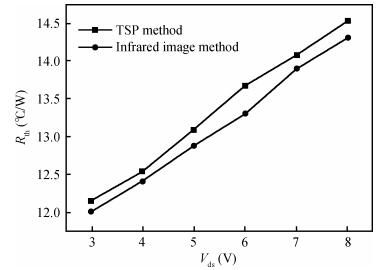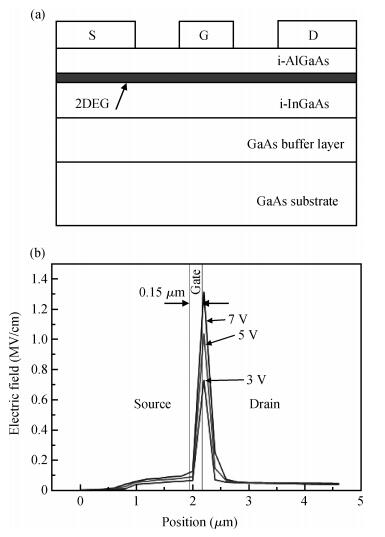| Citation: |
Lin Ma, Shiwei Feng, Yamin Zhang, Bing Deng, Yuan Yue. Evaluation of the drain-source voltage effect on AlGaAs/InGaAs PHEMTs thermal resistance by the structure function method[J]. Journal of Semiconductors, 2014, 35(9): 094006. doi: 10.1088/1674-4926/35/9/094006
****
L Ma, S W Feng, Y M Zhang, B Deng, Y Yue. Evaluation of the drain-source voltage effect on AlGaAs/InGaAs PHEMTs thermal resistance by the structure function method[J]. J. Semicond., 2014, 35(9): 094006. doi: 10.1088/1674-4926/35/9/094006.
|
Evaluation of the drain-source voltage effect on AlGaAs/InGaAs PHEMTs thermal resistance by the structure function method
DOI: 10.1088/1674-4926/35/9/094006
More Information
-
Abstract
The effect of drain-source voltage on AlGaAs/InGaAs PHEMTs thermal resistance is studied by experimental measuring and simulation. The result shows that AlGaAs/InGaAs PHEMTs thermal resistance presents a downward trend under the same power dissipation when the drain-source voltage (VDS) is decreased. Moreover, the relatively low VDS and large drain-source current (IDS) result in a lower thermal resistance. The chip-level and package-level thermal resistance have been extracted by the structure function method. The simulation result indicated that the high electric field occurs at the gate contact where the temperature rise occurs. A relatively low VDS leads to a relatively low electric field, which leads to the decline of the thermal resistance. -
References
[1] Fanning D, Balistreri A, Beam I EⅡ, et al. High voltage GaAs PHEMT technology for S-band high power amplifiers. CS Mantech Conf, 2007:173[2] Zhang Shujing, Yang Ruixia, Gao Xuebang, et al. Large signal modeling of GaAs HFET/PHEMT. Chinese Journal of Semiconductors, 2007, 28(3):439 http://www.jos.ac.cn/bdtxben/ch/reader/view_abstract.aspx?file_no=06090508&flag=1[3] Green B M, Lan E, Li P, et al. A high power density 26 V GaAs PHEMT technology. IEEE MTT-S International, 2004, 2:817[4] Moolji A A, Bahl S R, del Alamo J A, et al. Impact ionization in InAlAs/InGaAs HFET's. IEEE Electron Device Lett, 1994, 15(8):313 doi: 10.1109/55.296227[5] Killat N, Kuball M. Temperature assessment of AlGaN/GaN HEMTs:a comparative study by Raman, electrical and IR thermography. IEEE International, 2010:IRPS10-528-530 http://ieeexplore.ieee.org/document/5488777/[6] Sarua A, Ji H, Uren M J, et al. Integrated micro-Raman/Infrared thermography probe for monitoring of self-heating in AlGaN/GaN transistor structures. IEEE Trans Electron Devices, 2006, 53(10):2438 doi: 10.1109/TED.2006.882274[7] Kovájr J, Jha S K, Jelenkovi E V, et al. Study of temperature distribution in the channels of AlGaN/GaN HEMT devices by μ -haracterization techniques. IEEE ASDAM, 2010, 5666315:123 http://ieeexplore.ieee.org/document/5666315/?reload=true&arnumber=5666315&punumber%3D5653062%26sortType%3Dasc_p_Sequence%26filter%3DAND(p_IS_Number:5666309)%26pageNumber%3D2[8] Zhang Guangchen, Feng Shiwei, Hu Peifeng, et al. Channel temperature measurement of AlGaN/GaN HEMTs by forward Schottky characteristics. Chin Phys Lett, 2011, 28(1):017201 doi: 10.1088/0256-307X/28/1/017201[9] Szekely V. Enhancing reliability with thermal transient testing, Microelectron Reliab, 2002, 42(4/5):629 http://linkinghub.elsevier.com/retrieve/pii/S0026271402000288[10] Zhang Yamin, Feng Shiwei, Zhu Hui, et al. Two-dimensional transient simulations of the self-heating effects in GaN-based HEMTs. Microelectron Reliab, 2013, 53:694 doi: 10.1016/j.microrel.2013.02.004[11] Rajasingam S, Pomeroy J M, Uren M J, et al. Micro-Raman temperature measurement for electric field assessment in active AlGaN-GaN HFETs. IEEE Electron Device Lett, 2004, 25(7):456 doi: 10.1109/LED.2004.830267[12] Hu W D, Chen X S, Quan Z J, et al. Self-heating simulation of GaN-based metal oxide semiconductor high electron mobility transistors including hot electron and quantum effects. J Appl Phys, 2006, 100:074501 doi: 10.1063/1.2354327 -
Proportional views






 DownLoad:
DownLoad:
